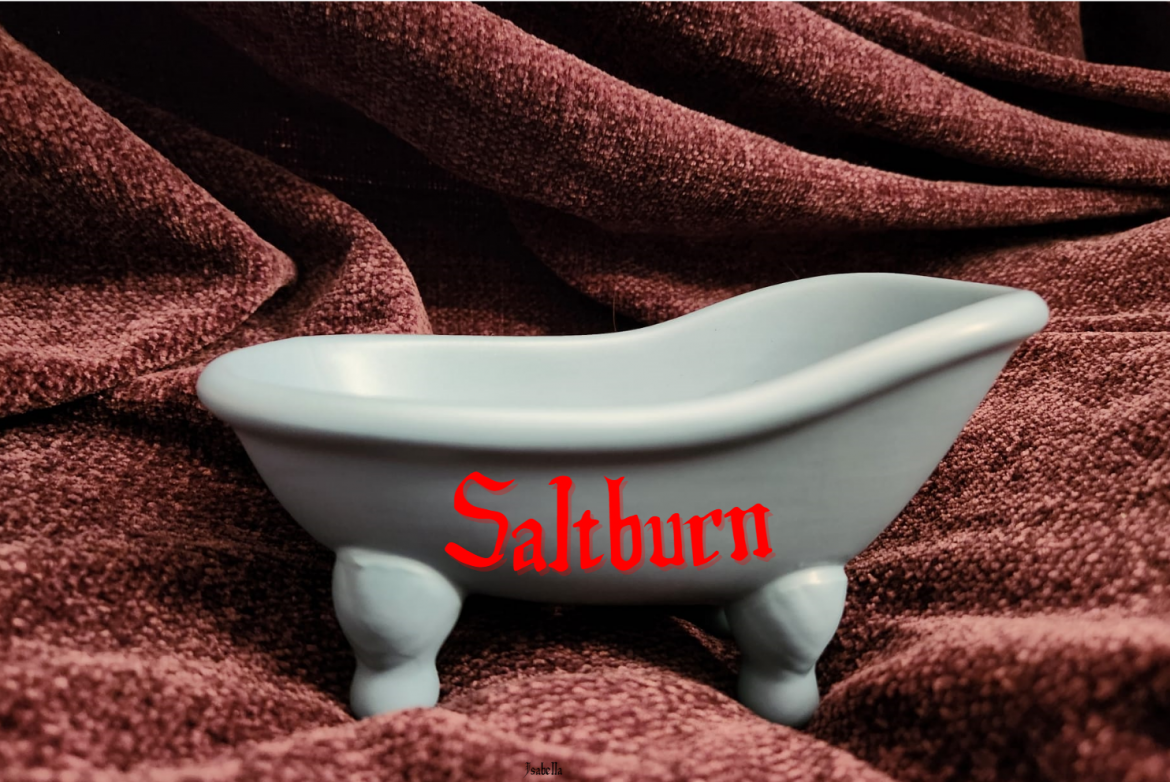Photo Credit: Emily Tung
The grotesque film includes more than meets the eye.
Angelina Fernandez, Arts Editor
Disclaimer: This article contains major spoilers for the film Saltburn. Due to the nature of its content, this film is not for everyone, so viewer discretion is advised.
Perhaps the most shocking, and yet intriguing film to emerge out of the end of 2023 was Saltburn. Set in 2000s England, it features a studded cast centered on Barry Keoghan’s Oliver Quick and the Catton family, with Jacob Elordi as Felix, Rosamund Pike as Elspeth, Alison Oliver as Venetia, Archie Madewke as Farleigh, and Richard E. Grant as Sir James.
In all its dirty glory, the film intricately weaves a narrative centered on what begins as Oliver’s obsession with his classmate, Felix Catton, and ends with an exploration of the British class system, desire and repulsion, and an ode to the genre of the Gothic. Focused on Oliver’s wickedness and depravity, as depicted by grotesque scenes that have been characterized as “the bath scene,” “the vampire scene,” and “the grave scene,” the film’s cinematic intelligence and symbolism tends to be overshadowed by its shocking content.
Here are four things you may have missed in Saltburn:
- The Doppelgänger Effect
During Oliver’s first breakfast at Saltburn, Venetia recalls the story of British poet Percy Bysshe Shelley’s doppelgänger, who was supposedly seen by his housekeeper walking past a window, waving at her. After seeing the man, the housekeeper realized two things: Shelley was in Italy, and she was currently cleaning the top floor of the home. Concluding the story, Venetia tells the table that Shelley died in Italy a few hours following the occurrence.
As she tells the story, for about two seconds the audience can see a doppelgänger resembling Felix — who is dressed in the exact same pink dress shirt — behind Venetia. Just like the housekeeper’s realization that Shelley was in Italy, the audience may realize that Felix is not outside, but instead sitting beside his sister. The scene foreshadows Felix’s eventual death whereby his corpse will be wheeled past the same window that his doppelgänger walked by after his “accidental overdose” in the maze of Saltburn.
- The Minotaur/Changeling and Icarus
While the film owes much to the Gothic genre in terms of cinematography, there are allusions to Greek mythology and the Shakespearean play A Midsummer’s Night Dream. At Oliver’s birthday party, his costume resembles both the horns of the Minotaur as well as the deer antlers of the Changeling in Shakespeare’s play.
Similar to the Minotaur in the labyrinth, Oliver transforms into a monstrous version of himself in Saltburn’s maze to deceive the Catton family and initiate the first part of his scheme — killing Felix by poisoning him. During his scenes at Oxford, particularly around the 22-minute mark, this is foreshadowed when Oliver looks at Felix through a glass pane at the pub: a sticker in the corner of the window depicts the Minotaur, signaling that Oliver will undergo this transformation from man to beast.
In addition, Felix can be seen as a figuration of Icarus, the boy who flew too close to the sun, as he wears a pair of golden wings at the same party. In this case, Felix’s life — representing social power, wealth, privilege, and beauty — can be perceived as the “sun” that leads to his tragic end at the hands of Oliver.
- The Catton Players
As Oliver settles into his room at Saltburn, he encounters a marionette display that depicts the key members of the Catton family (Felix, Venetia, James, and Elspeth) as puppet figurations (34:28). Intrigued, he turns the knob that juts out of the display, watching intently as the “players” begin to shake wildly, and are only able to be put at rest once again when Oliver presses the knob to turn it off again.
Entitled “The Catton Players,” this display signifies the role of the Catton family as puppets and toys. Oliver eventually becomes the true puppet master, who controls the subsequent events of the Catton family’s lives. Ultimately, this challenges the audience’s initial conception that Felix is the one toying with Oliver, and is further reinforced by the ending scene when “The Catton Players” make an appearance yet again as Oliver adjusts the stones atop the display. Through this, the audience recognizes that Oliver has effectively achieved his goal of making the Catton’s wealth and estate his own.
- The Colour Red
As Saltburn cinematographer Linus Sandgren succinctly explained in an interview with The Credits, the colour red was interpreted by the filmmakers as a “traditionally symbolic colour for lust and love but also for blood and death and the internal body colour.” Red is a colour that continuously appears throughout the film, with its most striking use appearing when the curtains are drawn to conceal the image of Felix’s corpse being wheeled away on a gurney by local authorities near the end of the film (01:38:00).
As the family is shrouded in red light, they undergo the different stages of grief respectively, with each character representing a different reaction. Furthermore, the first character that the camera cuts to upon the curtains closing is Felix’s sister, Venetia. Consumed with grief, Venetia is seen unwittingly pouring herself a glass of wine that overflows; the red wine has seeped into the tablecloth. This scene foreshadows Venetia’s own death by apparent suicide (a death that is directly influenced by Oliver) where she drowns in her blood in Felix’s bathtub.
Saltburn is, despite its sometimes-disturbing imagery, a great movie with beautiful colours and symbolism. If you are interested in watching it, it is available on Prime Video.



